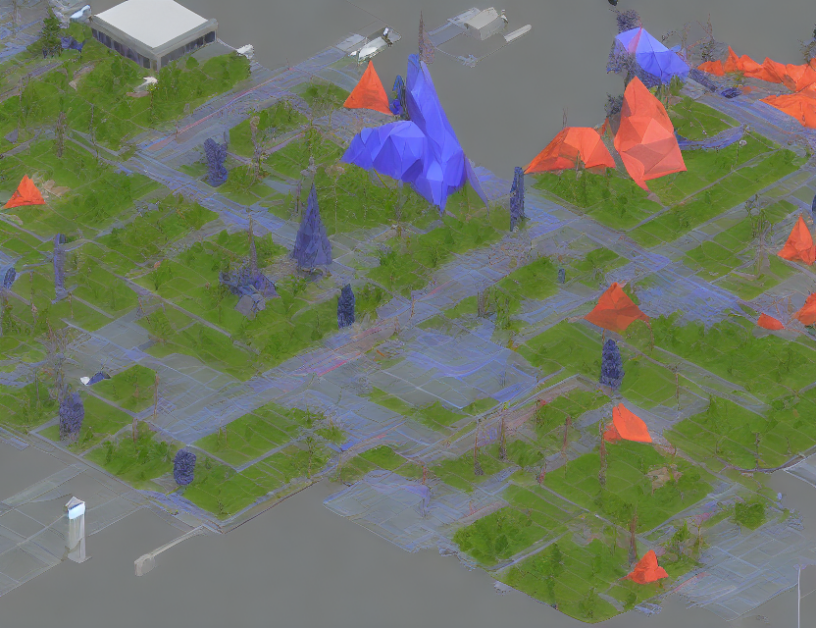Evolutionary multitask optimization is a technique that combines multiple tasks into a single optimization process, similar to how evolution has shaped different species to adapt to their environments. This approach can improve the efficiency and effectiveness of optimization algorithms by leveraging the relationships between different tasks. In this survey, we will explore the recent advances in evolutionary multitask optimization, including new metaheuristics, transfer optimization methods, and applications in various fields.
Introduction
Evolutionary optimization has been a popular approach in computational intelligence for decades, with a wide range of applications in areas such as engineering design, scheduling, and machine learning. However, many real-world problems involve multiple tasks or objectives that need to be optimized simultaneously, which can make the optimization process more complex and challenging. This is where evolutionary multitask optimization comes into play. By combining multiple tasks into a single optimization process, we can leverage the relationships between them to improve the overall performance.
New Metaheuristics for Evolutionary Multitask Optimization
Several new metaheuristics have been proposed in recent years to tackle evolutionary multitask optimization problems. These include:
- Evolutionary Multifactorial Optimization (EMFO): This algorithm uses a multifactorial approach to optimize multiple tasks simultaneously. By considering the relationships between different factors, EMFO can find better trade-offs between different objectives.
- Transfer Optimization for Evolutionary Multitasking (TEVC): This method leverages knowledge transfer from one task to another to improve the optimization process. By using the experience gained from one task to inform the optimization of another, TEVC can reduce the search space and improve the convergence rate.
- Evolutionary Multi-population Optimization (EMPO): This algorithm divides the optimization problem into multiple populations, each specialized for a different task. By using different populations, EMPO can explore a wider range of solutions and find better trade-offs between tasks.
Transfer Optimization Methods
In addition to new metaheuristics, transfer optimization methods have also been proposed to improve the efficiency of evolutionary multitask optimization. These include:
- Knowledge Transfer Strategy (KTS): This method uses a knowledge transfer matrix to transfer knowledge from one task to another. By using the expertise gained from one task to inform the optimization of another, KTS can improve the convergence rate and reduce the search space.
- Multi-population Knowledge Transfer (MKT): This algorithm divides the optimization problem into multiple populations, each specialized for a different task. By transferring knowledge between populations, MKT can improve the convergence rate and find better trade-offs between tasks.
Applications in Various Fields
Evolutionary multitask optimization has been applied to a wide range of fields, including:
- Computer Network Optimization: By optimizing multiple tasks simultaneously, such as network throughput and latency, evolutionary multitask optimization can improve the overall performance of computer networks.
- Robotics and Control: Evolutionary multitask optimization can be used to optimize multiple tasks in robotics, such as motion planning and control, while taking into account constraints such as energy efficiency and safety.
- Resource Constrained Project Management (RCPM): This method applies evolutionary multitask optimization to the project management problem, where multiple tasks need to be optimized simultaneously while taking into account resource constraints.
Challenges and Future Research Directions
While evolutionary multitask optimization has shown promising results in recent years, there are still several challenges that need to be addressed in future research. These include:
- Handling High-Dimensional Optimization Problems: Many evolutionary multitask optimization algorithms struggle with high-dimensional optimization problems, where the number of variables exceeds the number of observations.
- Dealing with Non-Linear Relationships between Tasks: In many cases, the relationships between tasks are non-linear, which can make it difficult to find the optimal trade-offs between them.
- Lack of Interpretability and Explainability: Evolutionary multitask optimization algorithms often lack interpretability and explainability, making it difficult to understand why a particular solution was chosen.
In conclusion, evolutionary multitask optimization is a powerful approach that combines multiple tasks into a single optimization process, leveraging the relationships between them to improve performance. Recent advances in new metaheuristics and transfer optimization methods have shown promising results in improving the efficiency and effectiveness of optimization algorithms. However, there are still several challenges that need to be addressed in future research, including handling high-dimensional optimization problems, dealing with non-linear relationships between tasks, and lack of interpretability and explainability.



